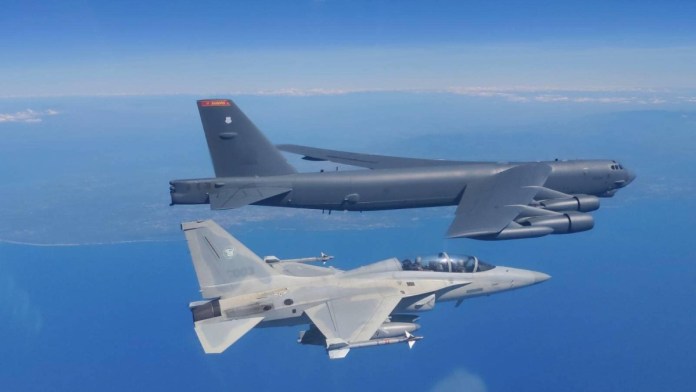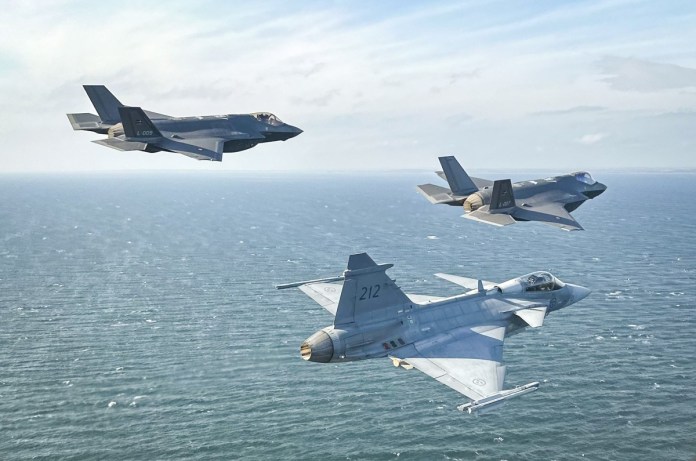Willingness to transfer technology likely helped the multinational Eurofighter Typhoon and French Dassault Rafale emerge as the short-listed rivals for India's Medium Multi-Role Combat Aircraft (MMRCA) program, observers said, although at least one U.S. official said the Indian Air Force's technical requirements were the deciding factor.
The Indian government has not even formally announced the downselect, let alone explained why it ruled out the Swedish Saab JAS-39 Gripen, the Russian MiG-35, and two U.S.-built jets, the Boeing F/A-18E/F Super Hornet and the Lockheed Martin F-16IN Super Viper, from the $10 billion, 126-aircraft program.
Instead, the news was passed April 27 to the jet-makers' national governments, irking at least some U.S. industry players.
"The way the decision was made and announced has only made things worse: The [government of India] knew full well the importance the administration attached to this sale. A quiet intimation of the coming decision would have helped considerably. It was really unfortunate that this was not done," said Ashley Tellis, an analyst at the Carnegie Endowment for International Peace in Washington.
A Indian Defence Ministry source said the decision was based on technical evaluations and flight tests, not political considerations or influence. Defence Minister A.K. Antony insisted that the selection be based on merit alone, the source said.
A senior Defence Ministry official said India will next open negotiations over technology transfer and price with the remaining bidders, a process that could last all year.
Several analysts said that while the U.S. had allowed its jet makers to offer unprecedented access to technology, European contenders probably pledged more.
"The most likely explanation is that the Europeans wanted and needed it more. They were willing to bend over backwards in terms of technology transfer, in terms of industrial work share and in terms of other regulatory issues, and they really needed this," said Richard Aboulafia, an analyst at the Teal Group, Fairfax, Va. "For the U.S. contractors, it would have been gravy, but for the Europeans, it's survival through the end of the decade."
Byron Callan, an analyst at Capital Alpha Partners in Washington, agreed about the stakes, but also said the U.S. companies' loss augurs poorly for their chances in Brazil's fighter competition.
Others disagreed about the role of tech-transfer in the Indian decision.
Tellis said the choice merely reflected the Indian Air Force's (IAF) technical preferences.
"The down-select decision clearly represents the IAF's choice, which the MoD has obviously gone along with as expected," he said.
One senior U.S. administration official agreed.
"I wouldn't see the technology release issue as the clincher," he said. "This was a judgment made on the basis of the technical qualification requirements that the Indian Air Force had established as part of the procurement."
He said the two U.S. aircraft had failed to meet certain Indian technical criteria.
"India would have been well-served to take a more comprehensive look at the transaction," he said.
But the official also conceded there were certain technologies that the U.S. simply would not share.
"We have a defense licensing system which is consistent with the law of the land, and there are certain technologies we're simply not going to hand over. That's just a fact of life," he said.
Boeing disputed the assertion that the F/A-18E/F did not meet Indian technical requirements.
"We believe we offered the Indian Air Force a fully compliant and best-value multi-role aircraft for the defined mission," the company said in a statement.
Indeed, many analysts considered the Boeing entrant to be among the most technologically capable of the rivals, as well as offering the favored twin-engine configuration.
"The F/A-18, that surprised me," said Douglas Barrie, an analyst with the International Institute for Strategic Studies in London. "My side bet for the program would have been the Rafale, Typhoon and F/A-18E/F making it to the down-select."
One U.S. industry official noted that Indian officials had publicly asserted that viable contenders would have an operational active electronically scanned array (AESA) radar, something only the F/A-18/E/F and F-16IN possess. The European contenders are developing AESA arrays.
"Yet, it seems that the IAF and MoD made the decision based on strategic, political grounds, not technical merits," the official said.
Several analysts said India has not forgotten that the U.S. imposed sanctions on the country after a 1990s nuclear test, nor that Washington is working to bolster ties with arch-enemy Pakistan.
For the U.S. government, which has placed an enormous stake on securing a strategic partnership with India, the short-list decision comes as a bitter pill.
"We are reviewing the documents received from the Government of India and are respectful of the procurement process," U.S. Ambassador Timothy J. Roemer said. "We are, however, deeply disappointed by this news. We look forward to continuing to grow and develop our defense partnership with India."
Roemer's comments were echoed by the senior U.S. administration official, who noted that the country's relationship was far deeper than one transaction. He noted that India had purchased U.S. weapons worth billions of dollars in recent years, including C-130J and C-17 airlifters and P-8 maritime patrol aircraft.
The official said the Indian bureaucratic system does not know the American system particularly well, which undermines its confidence in the U.S. as a reliable supplier. Over time, the official said India's faith in the U.S. would grow stronger.
"The logic of the U.S.-India relationship is as compelling today as it was on Tuesday in Asia and beyond," he said. "It's not the end of the world."
Bhim Singh, an analyst and retired IAF wing commander, predicted that the rejection of Boeing and Lockheed Martin wouldn't hurt bilateral defense ties.
But Tellis said there would be repercussions.
"I think the Obama administration will be deeply disappointed with this decision - as will the Congress. I think U.S.-India defense relations have been in trouble for a while. I suspect this will make things more difficult," he said.
The Rejected
Boeing has its Navy contracts for the Super Hornet and EA-18G Growler and other orders coming in from Saudi Arabia for the F-15, while Lockheed is shifting its focus onto the gargantuan F-35 Lightning II stealth fighter project.
But Saab needed the Gripen to win the Indian competition to remain in production; the aircraft has few other prospects beyond Brazil.
"They're dead in the water," Aboulafia said.
For the Russians, the MiG-35 loss to the Western contenders is was not entirely unexpected, Barrie said. The aircraft is based on the aging MiG-29 airframe.
Still, the Russians have a huge backlog of Indian contracts, including a deal to co-develop a new fifth-generation stealth fighter, and they acknowledge India's desire to diversify its supplier base. United Aircraft Corp.'s "cooperation with India is the widest of all countries and we understand that Indians do not want to keep all eggs in one basket and try to diversify suppliers," said an official from the Russian company.
Ruslan Pukhov, an analyst with the Center for Analysis of Strategies and Technologies in Moscow, agreed that the rejection of the MiG-35 in the MMRCA tender will not affect other projects.
"While Russia and India had bitterly quarreled over the cost of refitting of the Admiral Gorshkov aircraft carrier, it has not upset any other project," he said.
The Russians said the MiG met all of India's technical criteria.
Lockheed Martin and Saab acknowledged the Indian decision in written statements, while Boeing said, "We are obviously disappointed with this outcome. Our next step is to request and receive a debrief from the Indian Air Force."

